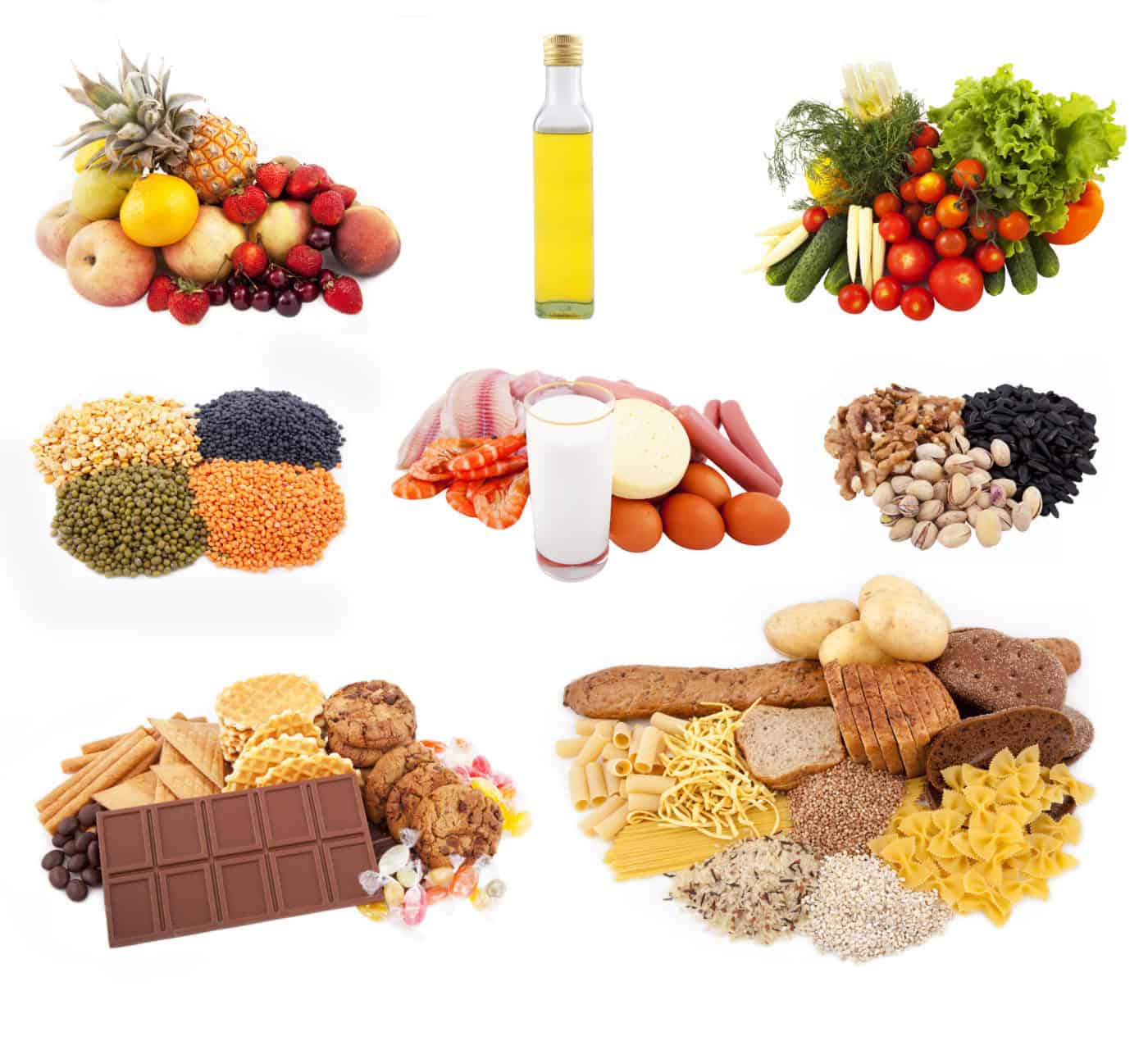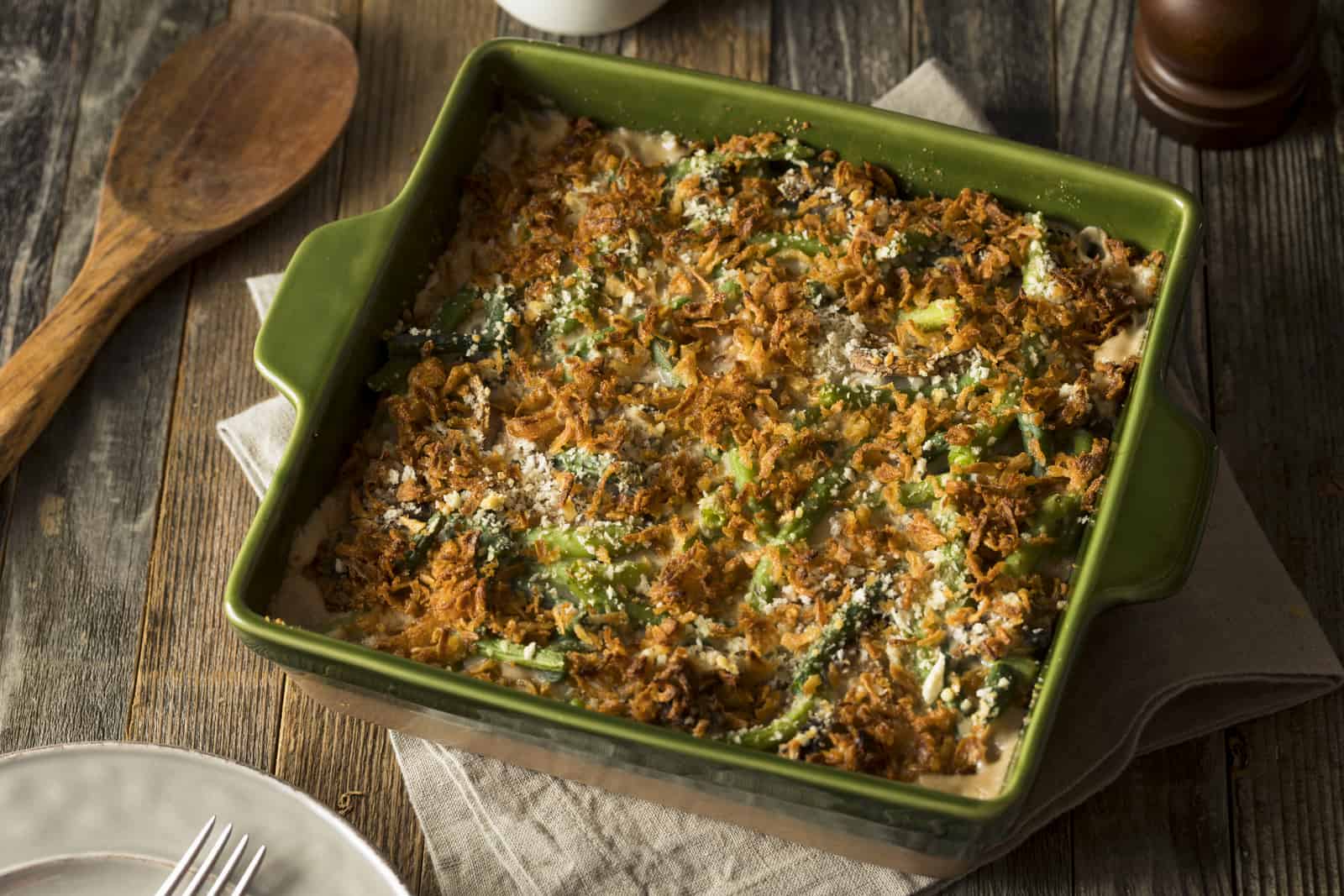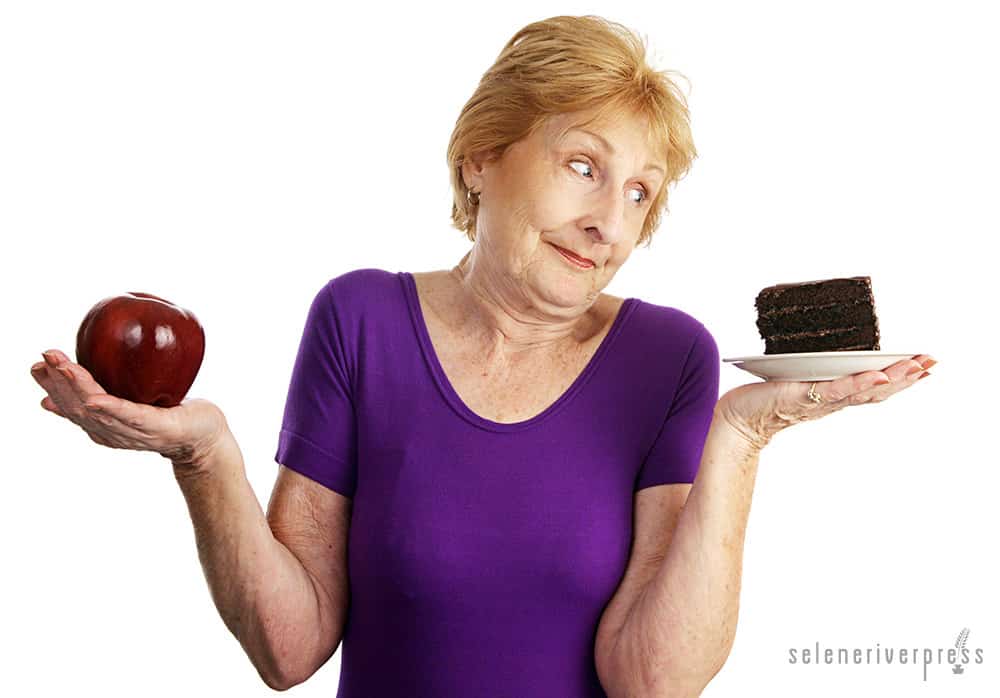“Carbs” is an abbreviated slang word for carbohydrates, a critical part of the human diet. I get more questions about this subject than almost any other food item. I subscribe to many email newsletters about nutrient dense foods, and carbs came up a lot in November, along with a cornucopia of Thanksgiving recipes.
Each newsletter detailed its own version of great Thanksgiving recipes. For the most part, they all included all high-carb dishes like mashed potatoes, whole grain croutons for the turkey, and even the famous green bean casserole, which has now been gratefully converted to a healthy dish. (See recipe below.)
Now, you might ask why I’m giving you information you already know. Well, hang in there, as this might be the one blog post that will incentivize you to tweak your future holiday meal plans and serve a mix of festive low-carb dishes along with the traditional high-carb recipes we generally cook with abandon on days of celebration. About now you’re probably wondering why you’d even want to consider such a change, but please read on. It will become apparent why this modification may be the way to go.
With that said, and with a whole new year just over the horizon, I thought this would be an appropriate time to introduce you to “Why We Need Carbs,” a very interesting article by Chris Masterjohn, PhD, published in the November 2016 edition of the Wise Traditions Journal. I’m one of the 400-plus chapter leaders and belong to the chapter leader discussion group, and I was astonished at the response to the article that revealed how many readers ate low-carb meals—and some who ate almost no carbs!
Chris Masterjohn is always very detailed and scientific, and his article is a fascinating read that details the many incredible benefits carbs provide to the body. Masterjohn’s findings suggest we should consume approximately 100 grams of complex carbs a day for optimal health. This is way over the amount consumed by some of the people who responded to the article, and it seemed to provoke all the pro and con discussions about the amount of carbs we should or should not eat. Before going on, allow me to quote a bit from the article:
Excerpt from “Why We Need Carbs”
By Chris Masterjohn, PhD
“One of the lessons that comes across most clearly from the studies that Weston Price documented in Nutrition and Physical Degeneration is that, although traditional diets all emphasized nutrient-dense foods, the specific mix of animal and plant foods was widely variable. Since it is primarily plant foods that provide carbohydrate, the carbohydrate content of traditional diets was also widely variable. In groups that lived in the Arctic, it was very low; in groups that lived close to the equator that relied on grain, it was much higher.
“This observation implies that humans can thrive on a wide range of carbohydrate intakes, but it does not imply that anyone in any circumstance can live on a diet that is virtually free of carbohydrate, and it does not imply that carbohydrate is not important. In fact carbohydrate is essential to our physiology. In this article, I will discuss the essential roles of carbohydrate in the body,1 and then derive some practical conclusions about how we can manage our own carbohydrate intake.”
At the same time I was reading Masterjohn’s article, I was knee-deep in Coconut Ketogenic Diet by Bruce Fife, ND, which also talks about carbs and ketones, as well as other blood sugar balancing and weight loss recommendations. In reading Fife’s book, I was specifically in search of information that addresses the stubborn fat that hangs in there regardless of how much we diet!
Dr. Fife makes the case for limiting carbs to about 20 grams per day, which is very, very low for most of us. And, if you follow the coconut ketogenic diet as outlined in his book, your body is able to go into ketosis. Following is a brief comment sent to me from Dr. Fife as a short way to explain this phenomenon:
“When we eat carbohydrates, they are converted into glucose and released into the bloodstream. As the glucose enters the bloodstream, blood sugar (glucose) levels rise. Glucose is used by the cells as fuel for energy production. However, glucose cannot enter the cell without the aid of insulin. Insulin essentially opens the door of the cell membrane to allow glucose to enter. When blood glucose levels rise, a signal is sent to the pancreas to release more insulin into the bloodstream. If we eat a high-carb diet, especially one rich in sugars, sweets, and refined grains, our blood glucose and insulin levels will be elevated for extended periods of time.
“Our cells become desensitized to the action of insulin when they are constantly exposed to high insulin levels. The results is insulin resistance, which means the cells are starved of energy and insulin levels remain elevated for extended periods of time, compounding the problem.
“It is somewhat like going into a smelly room. When you first enter the room the odor can be overpowering, but over time the smell becomes less intense. This is because our sense of smell becomes desensitized to the odor. If we left the room for awhile, our sense of smell gradually returns to normal so that if we reenter the smelly room we again can detect the offending odor. Likewise with insulin; if you keep insulin levels low for a period of time, the cells can regain their insulin sensitivity, which means that we essentially can cure our insulin resistance.
“The most successful means to do that is through a ketogenic diet and/or intermittent fasting.” (Emphasis mine.)
—Correspondence from Bruce Fife, ND, author of the Coconut Ketogenic Diet
Personal note: Regardless of whether or not you use a coconut ketogenic diet, I highly recommend Dr. Fife’s Keto Cookery. You’ll find some of the best low-carb sauces, gravies, and soups, plus many other tasty recipes.
Carb Intake Recommendation from Julia Ross
As documented in her book Mood Cure, Julia Ross garnered worldwide respect for her phenomenal success treating deep-seated mental disorders—including sadness, loneliness, grief, mental lethargy, depression, schizophrenia, weight management, and other issues. Ross recommends combining specific vitamins and minerals listed in her book, along with a dramatic change in diet (patterned after the Wise Traditions diet philosophy).
You might guess that Ross would be pro low-carb or even paleo. However, she in fact has her clients switch to a diet that contains a good deal of complex carbohydrates. She makes the case that in treating these very common mental states; it takes two to tango regarding carbohydrate types. She promotes both low-carb vegetables and high-carb items such as potatoes, squash, and organic whole grains.
Discussing Carbohydrates with Two Other Experts
I have a close relationship with two top-level holistic practitioners who are also Standard Process mentors. (A Standard Process mentor is a practitioner who has reached a certain level of competence in their own practice and now teaches other doctors.) In this case I spoke with Joseph Antell, a master herbalist, and Lynn Mayer, CNC.
They were both on the same page regarding the crucial importance of excluding all simple carbohydrates. That means not just refined sugars but also natural sweeteners as approved in Nourishing Traditions, plus white flour, etc. They even suggest limiting complex carbs as well, if we are to heal insulin resistance, which can lead to diabetes and many other disorders.
The Right Path for You May Not Be the Right Path for Me
I spent many days analyzing these varied recommendations from highly qualified and learned people. Frankly, I was in a state of limbo regarding which path I should take, until it became apparent to me that, no matter which recommendation I took, all would require several major difficulties of me. I would need to do all of the following:
- Change the habitual way I’ve been eating for years!
- Stay within the recommended carb guidelines and find a method to weigh or gauge how many grams of carb I ate at each meal! At best, this would be very time consuming.
- And last but not least, I would need to commit a great deal of time to educating myself, planning my meals, and creating a different agenda regarding grocery shopping. Whew!
In other words, before attempting to apply new and unfamiliar guidelines to something as utterly natural as eating, we may need to first be sure that we need that particular diet program. More importantly, we should ask ourselves if we really can follow through on any drastic changes that may be called for.
I finally realized that, for the most part, these specialized diet plans are meant for people who have possibly abused the laws of normal eating for many years, and never developed general healthy habits.
This abuse would naturally lead to the point that they would need to repair the damage (either mental issues or physical disorders like insulin resistance) and follow a specific type of diet as mentioned above, until they reach a point of wellness and learn how to maintain it.
If you’re in that group of people, I agree that you may be a candidate for this specific type of diet, and it might be better administered with the help of a nutritionist or someone who has already mastered the recommended techniques and guidelines. However, be ready for a high level of commitment and follow the advice as given so you avoid yo-yo dieting, which can leave you discouraged and vulnerable to going back to old habits.
My Personal Recommendation
Let’s face it, all “diets” are comprised of things we wouldn’t otherwise need to do if we were eating in moderation. This is a self-defining term as what may be a lot of food for me wouldn’t be for someone else. What’s essential is choosing from all the nutrient dense food groups recommended in the Wise Traditions philosophy and detailed in Nourishing Traditions. This philosophy is also supplemented in Stephanie Selene Anderson’s superior guide to healthy food shopping, Put Your Money Where Your Mouth Is!
Should you want to try a less restrictive, less expensive, and less time-consuming special diet, I suggest the one described below, along with whole food supplements offered by Standard Process holistic practitioners. I also recommend a good deal of coconut oil as part of the regimen. It’s also worth repeating that I strongly recommend eliminating all simple carbohydrates, including alcohol of any kind, as well as caffeine. (See why eliminating caffeine and energy drinks is so important in my blog post “Coffee, Please: The Destructive Nature of Caffeine.”)
The Cortisol Connection Diet
Over the years, my studies eventually led me to a small but wonderful book called The Cortisol Connection Diet. (Though I recommend the book, I don’t recommend the supplement brands or types of supplementation in it. You should consult your own holistic practitioner for testing and spend your money on what your practitioner explains would best fill your needs.)
The Cortisol Connection outlines a unique idea of portioning foods, suggesting that you use your own hand as a measuring tool. No grams to measure. (Smile)
- Inside of your palm: your allotted amount of protein per meal.
- Your entire open hand: amount of greens and/or vegetables.
- Your closed fist: amount of carbohydrates best suited for you (either non-starchy or regular vegetables, including potatoes with skin, beans, winter squash, etc., but no refined, simple carbs as noted above). (Note: Not every meal would require carbs. Let your tastes and preference rule—the portion size is more important.)
Along with the recommendations in this book, I also suggest observing intermittent fasting as suggested by Dr. Fife. I added this suggestion after reading about the enormous benefits of this practice. Intermittent fasting is very important because even if you’re not following a ketogenic diet as such, you will nevertheless be creating ketones.
I was surprised when I discovered that by combining these steps and staying with them, within two weeks I could feel my slacks getting a bit looser. My discouragement became an enthusiastic high! In effect, I was cutting down on my carb portions substantially but without all the detailed work involved with a highly specialized diet.
With that in mind, I’d like to get back to my suggestion of including low-carb dishes at your next celebration. Maybe even a majority of the meal should be low in carbs. Below are a few recipes that are a good place to start in making sure all your future meals will prevent your blood sugar levels from behaving erratically and ultimately avoid that devil we call insulin resistance.
Festive Low-Carb Recipes
Turkey Stuffing (Low Carb)
—Adapted from Healthful Pursuit. As noted in the original recipe, it’s important not to skip the first step as it will help the bread retain its shape in the stuffing, so plan on beginning 24–48 hours in advance.
Ingredients
1 loaf coconut flour bread (recipe here)
¼ cup fresh parsley
2 tablespoons tallow, coconut oil, or red palm oil
½ red onion, diced
4 celery sticks, diced
2 teaspoons dried thyme leaves
1 teaspoon dried rosemary
½ teaspoon dried ground sage
¼ teaspoon black pepper
¼ teaspoon Himalayan rock salt or Eden Celtic salt
¼ teaspoon ground ginger
¼ teaspoon ground cinnamon
1 cup beef bone broth
Instructions
- Roughly chop fresh-baked bread into 1-inch chunks (it doesn’t have to be perfect). Lay the pieces on a large baking sheet and place in the oven—don’t turn it on yet! Keep it there for 24–48 hours. If it’s still moist, let it sit in a 170°F oven for about 1 hour or so. The bread should be a bit moister than croutons, but not soft. Alternatively, you can dehydrate in your dehydrator at 130°F for 24 hours.
- Place the bread chunks in a large bowl. Toss with fresh parsley and set aside.
- Preheat oven to 350°F. Lightly grease a 2.5-quart casserole dish with a dab of tallow, coconut oil, or red palm oil.
- Heat oil in a large pan over medium-high heat. Add onion and cook until soft, about 5 minutes. Add celery, thyme, rosemary, sage, pepper, salt, ginger, and cinnamon. Cook for another 3 minutes.
- Remove from heat and add vegetable mixture to bread. Toss to combine, being sure not to over mix.
- Pour the beef broth over top of the bread. Again, be sure not to over mix. Just toss, and then add to the prepared casserole dish.
- Cover and bake for 30 minutes.
- Remove from the oven and let sit with the cover on for 5 minutes.
Storage instructions: If you’re planning on taking this dish to a dinner party or the like, don’t add the liquids beforehand. Add bread and mixture to a bowl, and store the liquid in another container. Bake when you get there. If you would like to prepare this dish in advance, bake it fully and store in the fridge for up to one day, or in the freezer for up to one month.
Supreme Green Bean Casserole
—Adapted from Low Carb Maven
Ingredients
1 lb. green beans, trimmed
⅓ lb. bacon, cooked and chopped
For the Supreme or Creamy Cheese Sauce:
2 tablespoons bacon drippings or fat of choice
3 oz. onion, minced
1 clove garlic, minced
1 tablespoon minced parsley
1 teaspoon lemon zest
4 tablespoons dry white wine or dry vermouth
6 oz. cream cheese, softened
¾ cup unsalted chicken stock or broth
3 oz. cheddar cheese, grated
1 teaspoon Worcestershire sauce
1½ teaspoons Dijon mustard
½–¾ teaspoon salt
¼ teaspoon pepper
For the topping:
⅓ cup pork rinds, crushed (or bread crumbs)
⅛ teaspoon granulated garlic
⅛ teaspoon salt
1–2 teaspoons olive oil
Instructions
- Preheat oven to 350°F and position rack in the middle. Butter an oven proof casserole dish.
- Cook green beans to your liking. (I like to put them in a microwaveable bowl with 2 tablespoons of water, cover them, and steam them on high power for 4–5 minutes. Test for doneness, uncover, and drain.) Place green beans into a large bowl with the chopped bacon and mix.
- To prepare the Supreme or Creamy Cheese Sauce: Heat a large skillet (I use a nonstick) over medium-high heat. Add bacon drippings when the pan is hot. Next, add minced onion and sauté until translucent, about 2–3 minutes. Add garlic and sauté until soft, about 1–2 minutes. Turn heat down to medium and add parsley, lemon zest, and wine. Sauté for about a minute, or until the smell of the alcohol has burned off. Add softened cream cheese, breaking it up in the pan so that it melts more easily. Add chicken broth little by little, whisking to combine until the cream cheese has melted. Turn heat to medium-low and let the sauce bubble a little to combine flavors and thicken slightly. Add the cheddar cheese, Worcestershire sauce, Dijon mustard, salt and pepper. Whisk and adjust seasoning to taste.
- Stir sauce into the bowl with the green beans and bacon. Pour green bean mixture into the buttered baking dish.
- To prepare the topping: Crush pork rinds by putting them in a plastic Ziploc bag and hitting them with the flat end of a meat mallet or rolling pin. Pour crumbs into a small bowl and add granulated garlic and salt. Add olive oil and mix together with your fingers. Sprinkle over the casserole.
- Bake for 15–20 minutes or until bubbly around the sides. Serve.
Note: Make sure the beans are cooked to your liking before adding them to the cheese sauce. Or you could let the casserole cook longer in the oven. If the sauce is too thick for you, add ¼ cup more chicken broth next time. It will be solid when refrigerated. Reheating will make it loose again.
AUTHOR’S NOTE
To choose your organically grown and fresh ingredients wisely, use the following criteria:
- chemical- and hormone-free meat
- wild-caught fish
- pasture-raised, organic eggs
- whole, unrefined grains
- virgin, unrefined, first-press organic oils
- whole-food, unrefined sweeteners
- pure, clean, spring water
- sea salt
- raw and/or cultured milk and cream products
Note from Maria: I am a Certified Natural Health Professional, CNHP, not a medical doctor. I do not diagnose, prescribe for, treat, or claim to prevent, mitigate, or cure any human diseases. Please see your medical doctor prior to following any recommendations I make in my blogs or on my website.
Photos from iStock/lisafx (main image), EvgeniaSh (separated foods), AmyLaughinghouse (sign), eternalcreative (woman with the scale), bhofack2 (green bean casserole)




